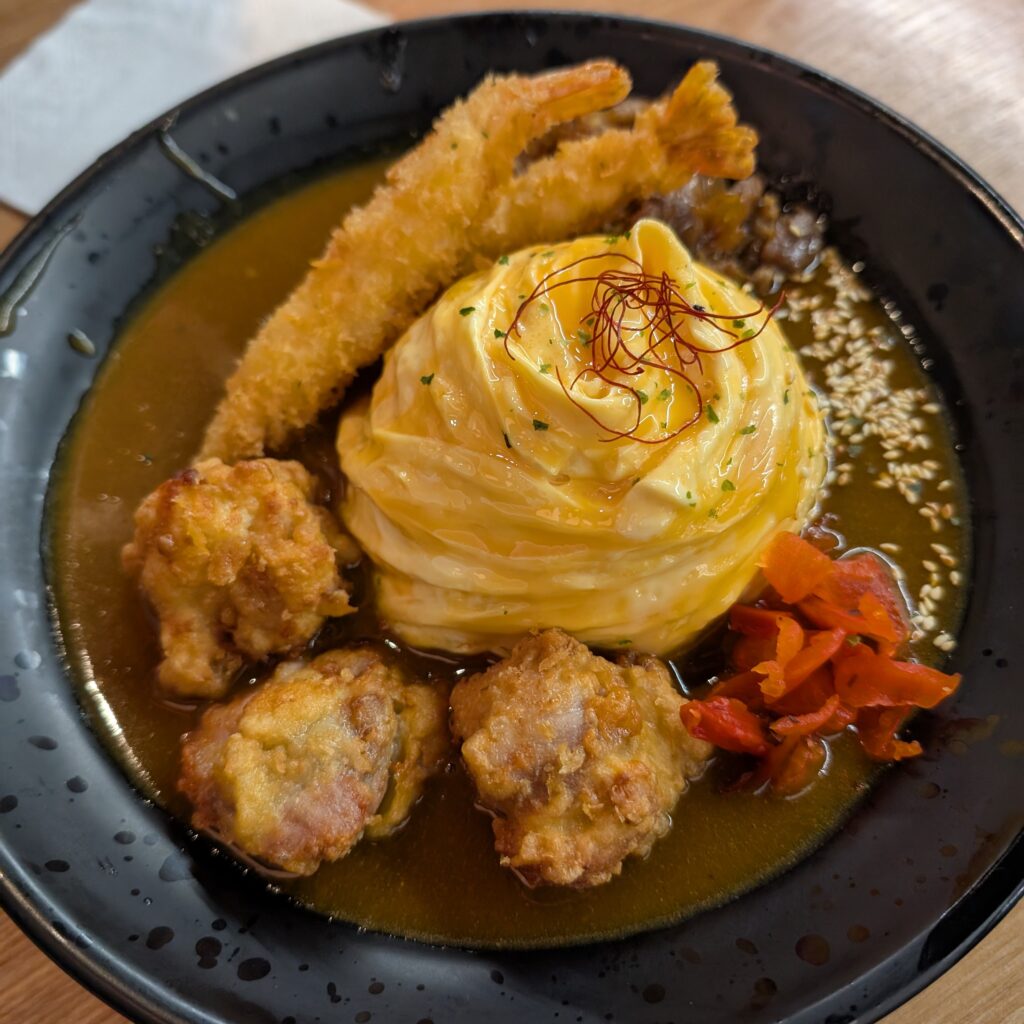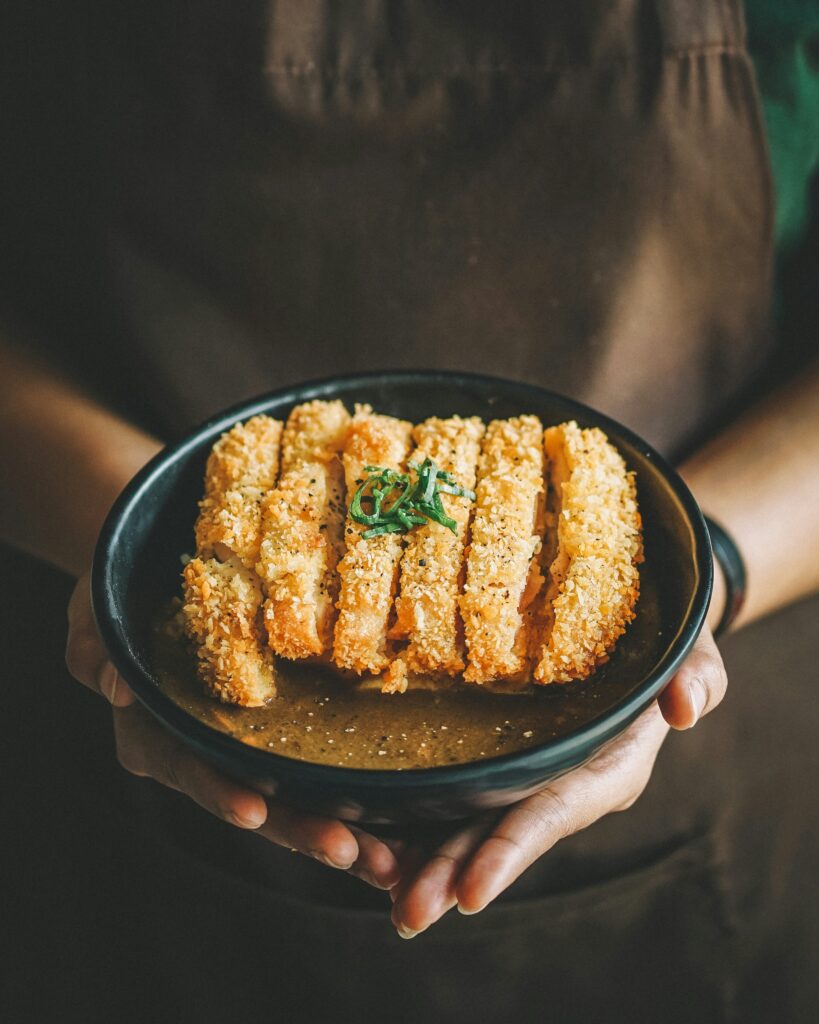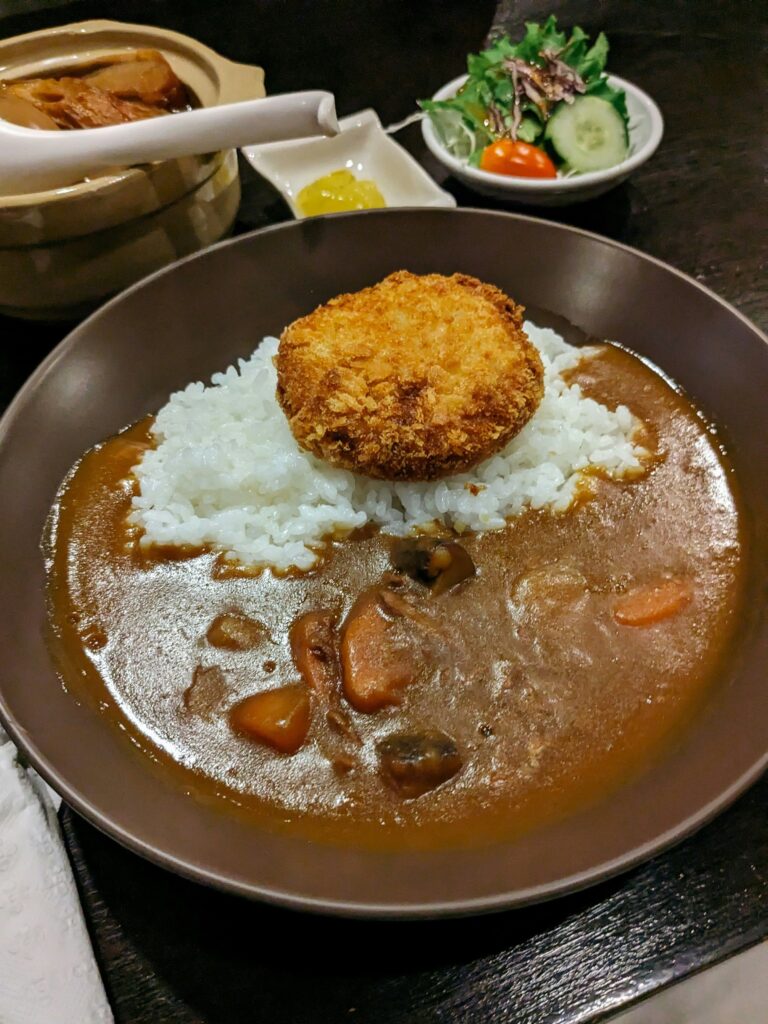Grounded: Notes From a Hands-On Cook
Some days, the kitchen feels like the only place that makes sense. A space where you actually touch the world instead of scrolling past it. Cooking feels so much better than watching cooking.

Somewhere along the way, fusion became a bad word. It used to mean excitement, creativity on a plate, and borders blurred in the best way. Now, it’s often whispered with suspicion, like someone’s about to serve you sushi tacos or ramen burgers (of which I’ve seen good and appalling versions). When did fusion lose its charm?
For anyone who’s had golden, crunchy katsu, buttery omurice, and the deeply satisfying Japanese curry, you’ve eaten some of the most comforting and beloved fusion food of all yōshoku, Japan’s take on Western food. Shaped by Japanese tastes, ingredients, and daily life, yōshoku is the kind of fusion that feels completely natural, the sort that’s woven into a culture so seamlessly it stops feeling like fusion at all.
During the Meiji Restoration (1868–1889), Japan opened itself up to the world after centuries of isolation. Along with railways, factories, and foreign ideas came something far more delicious — Western cuisine. But as Japan does so beautifully, it took those influences and transformed them.
Instead of straight imitation, cooks began adapting. European-style stews became gentler and thicker. A hamburger became hambāgu, seasoned with soy sauce and anointed with a glossy demi-glace rather than ketchup. Dishes were served with rice, not bread, because rice was (and still is) at the heart of every meal.
What emerged was food that looked vaguely Western but tasted distinctly Japanese. Over time, they became everyday staples, found everywhere from home kitchens to school cafeterias.
Tonkatsu is Japan’s answer to schnitzel — a pork cutlet coated in panko breadcrumbs and deep-fried until gloriously golden. It’s crisp yet light, often served with shredded cabbage, a bowl of rice, and a sweet-tangy tonkatsu sauce.
What I love most about katsu is how adaptable it is. You can make it with chicken, pork, or even mushroom, and it still delivers that irresistible crunch.
Pantry Staples:
Keep panko breadcrumbs, soy sauce, and tonkatsu sauce nearby. A quick dredge of flour, egg (or sub in mayo), and panko is all it takes to transform simple ingredients into something deeply satisfying.


Omurice might be the most charming of all. It’s basically fried rice wrapped in a thin omelette, topped with ketchup or demi-glace. Simple, yes but also somehow magical.
It’s a dish that feels nostalgic even if you didn’t grow up with it. Maybe it’s the ketchup-sweetness, or the soft omelette giving way to buttery rice. It’s playful food, unpretentious and full of heart.
Pantry Staples:
Rice, eggs, and yes ketchup are the foundations of omurice. Keep the egg soft and custardy for best results.
Japanese curry is one of those dishes that quietly wins you over. It’s rich and soothing — more stew than curry — with tender meat and vegetables swimming in a thick, almost sweet sauce. It is said to have come to Japan via British naval recipes, which in turn were inspired by Indian curries. Over time, the Japanese version became its own thing: milder, thicker, and immensely comforting.
Pantry Staples:
Keep Japanese curry blocks, onions, carrots, and potatoes on hand. Add leftover roast chicken, pork mince or even tempeh for an easy one-pot meal that tastes like you’ve been cooking all afternoon.

Maybe fusion lost its shine when it became gimmicky — when it stopped being about curiosity and started being about shock value. But yōshoku reminds me that fusion done thoughtfully isn’t contrived. It’s just what happens when people cook with what they have, where they are, influenced by the world around them.
I’m guessing Japanese home cooks didn’t set out to reinvent Western food; they were simply experimenting, adapting it for their tastes and their pantries. And that’s something we all do, whether we call it fusion or just dinner.
You don’t need a deep fryer or a trip to Tokyo to embrace yōshoku at home. A few simple staples and a little curiosity go a long way.
A Yōshoku-Ready Pantry:
Maybe fusion just needs a rebrand or maybe it just needs to be done the way yōshoku does it: with heart. Because the truth is, all food is fusion if you zoom out far enough. Cultures collide, ingredients travel, and recipes evolve. It’s in that ongoing conversation that we find the dishes that make us feel most at home.
So here’s to omurice, to katsu, to curry and to the kind of fusion that doesn’t feel forced, just deliciously welcome.
Some days, the kitchen feels like the only place that makes sense. A space where you actually touch the world instead of scrolling past it. Cooking feels so much better than watching cooking.
Traditions don’t enter into the world fully formed. They start as a good idea at the time. You gather a few people, raise a glass to something worth celebrating and somewhere between the food, the laughter and the decision to do it again next month/year/season, a tradition quietly slips into…
I never used to cook a lot of seafood at home. I didn’t need to; if I wanted a delicious seafood meal, I’d just visit my parents. It took until I was in my forties to really start cooking seafood at home on a regular basis. Pan-frying the odd fillet…